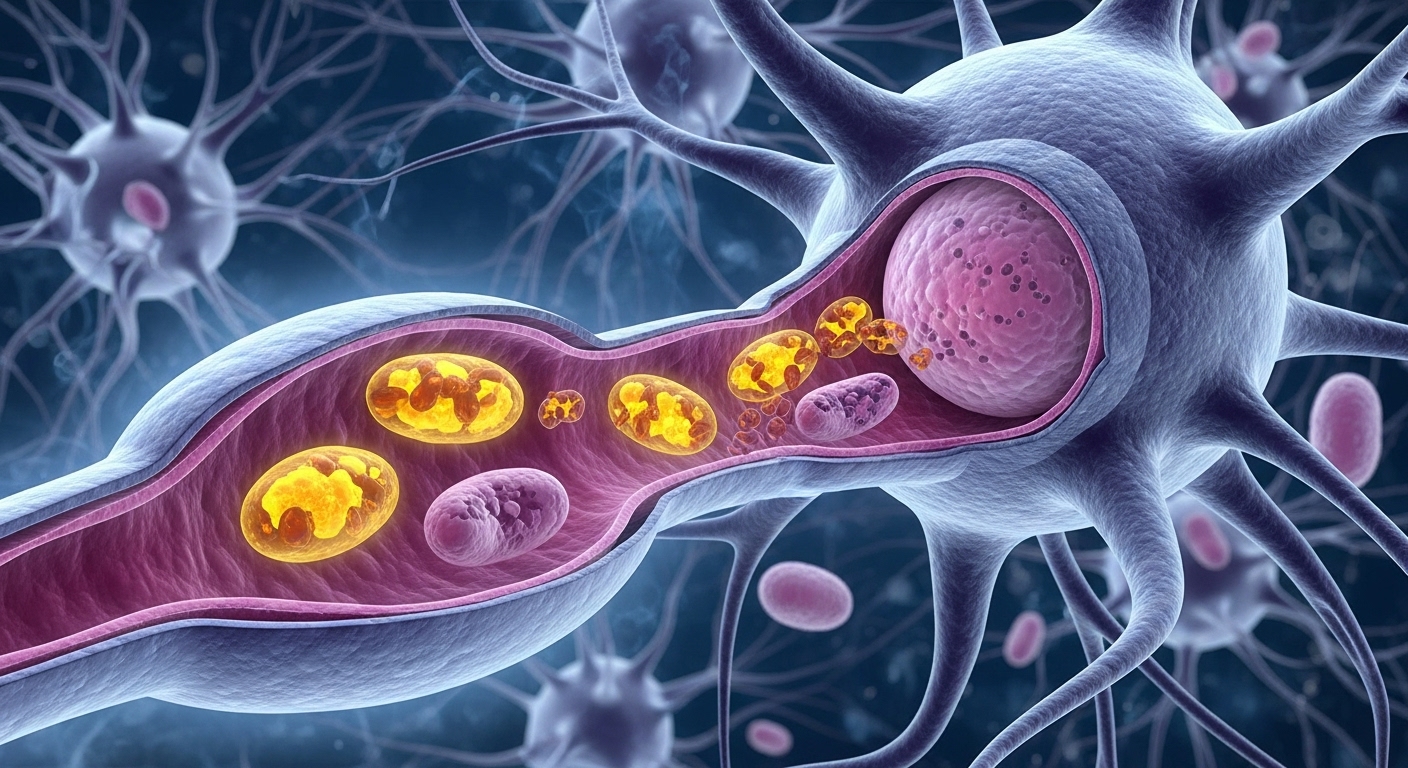Dr. Kumar’s Take
This paper shows a clear signal: long nicotine exposure is linked to fewer copies of mitochondrial DNA (mtDNA) in blood and brain tissue, and in human nerve cells in the lab. Fewer mtDNA copies usually mean the cell’s power plants are stressed. The study points to autophagy, the cell’s recycling system, as the main driver of that loss.
What to do about it: if you use nicotine, make a plan to taper and quit. Protect your mitochondria with basics that lower oxidative stress and support energy metabolism, like regular exercise, sleep, and a diet rich in colorful plants and omega-3 fats. If you are using nicotine to focus, swap to safer, proven strategies below.
Key Takeaways
✔ Nicotine exposure lowered mtDNA copy number in people who smoke, in rat hippocampus, and in human and rat neuron cell lines.
✔ Cells showed more oxidative stress and lower mitochondrial membrane potential, signs of energy strain.
✔ Autophagy ramped up and appeared to drive the drop in mtDNA. Blocking late-stage autophagy partly rescued mtDNA levels.
✔ Signal was dose and time dependent. Higher nicotine and longer exposure led to greater effects.
✔ Translation: long-term nicotine is not just addictive. It also stresses neuronal energy systems.
Actionable Tip
If you currently use nicotine, set a 4-week quit plan that combines behavioral coaching (1-800-QUIT-NOW) and first-line medications like varenicline or combination nicotine replacement under medical guidance. Pair it with daily brisk activity (20 minutes), 7–9 hours of sleep, and a whole food diet to support mitochondrial health during withdrawal.
Study Summary
Topic: Does nicotine exposure reduce mitochondrial DNA copy number, and is autophagy the mechanism?
Why it matters: mtDNA copy number reflects mitochondrial health. Lower levels can signal impaired cellular energy and resilience, especially in neurons.
What the authors found:
- People with nicotine dependence had lower mtDNA copy number in blood than non-smokers.
- Rats exposed to nicotine showed mtDNA loss in the hippocampus.
- Human SH-SY5Y and rat PC12 neuron cells exposed to nicotine showed mtDNA decline, increased reactive oxygen species, lower membrane potential, reduced mitochondrial mass, and stronger autophagy signals.
- Inhibiting the final step of autophagy partly restored mtDNA, suggesting autophagy mediates the loss.
Study Design and Methods (Plain Language)
- Human data: 24 adults with nicotine dependence vs 24 non-smokers. Measured mtDNA in blood.
- Animal model: Rats received nicotine and brain tissue was tested for mtDNA.
- Cell models: Human and rat neuron-like cells were exposed to rising nicotine doses for different times. Researchers measured mtDNA copy number, oxidative stress, mitochondrial membrane potential, and autophagy markers. They also used a blocker that prevents the last step of autophagy to see if mtDNA loss could be prevented.
Results
- mtDNA copy number fell across humans, rats, and cell models with nicotine exposure.
- Oxidative stress rose, mitochondrial membrane potential fell, and mitochondrial mass decreased.
- Autophagy increased in a dose- and time-dependent way. Blocking autophagosome-to-lysosome fusion reduced the mtDNA loss.
How Nicotine Hurts Mitochondria
Simple model: Nicotine → oxidative stress in neurons → mitochondria become damaged → autophagy turns on to clear damaged parts → mtDNA copy number drops as mitochondria are removed faster than replaced. Over time, this can weaken cellular energy supply.
Practical Health Moves While Quitting Nicotine
- Exercise most days: 20–30 minutes of brisk movement supports mitochondrial biogenesis.
- Sleep 7–9 hours: sleep loss increases oxidative stress and cravings.
- Nutrition for mitochondria: fatty fish, olive oil, leafy greens, berries, nuts, legumes.
- Focus without nicotine: 50/10 deep-work timers, 3 minutes of slow breathing, natural sunlight in the morning, and caffeine limits after noon.
Related Studies and Research
Nicotine and Endothelial Function – Reviews how nicotine affects vascular tone and oxidative stress.
Nicotine and Cognition: Meta-Analysis – Summarizes findings on nicotine’s impact on memory and attention.
Nicotine Patch in MCI Cognitive Trial – Examines whether nicotine aids in cognitive preservation in aging brains.
Podcast: Why This Neurosurgeon Will Never Use Nicotine – A breakdown of nicotine’s true effects on the body and brain.
Frequently Asked Questions
Does this mean occasional nicotine is safe?
“Safe” is not the right word. The study shows dose and time matter. Less exposure likely means less harm, but addiction risk rises quickly. The safest path is to avoid nicotine.
If I already quit, can mtDNA recover?
Mitochondria are dynamic. With time, exercise, sleep, and good nutrition, function can improve. The study hints that when autophagy stress drops, mtDNA levels can stabilize.
Is vaping different from smoking for mitochondria?
This paper looks at nicotine itself in cells and animal brain tissue, plus human smokers. The mitochondrial stress appears linked to nicotine exposure, not just smoke toxins.
What supplements help mitochondria while quitting?
Food and habits matter most. If you use supplements, discuss with your clinician. Some consider omega-3s, magnesium, and creatine, but they are adjuncts, not cures.
Conclusion
Nicotine exposure is tied to lower mtDNA copy number and mitochondrial stress in blood and brain, driven in part by autophagy. For brain health and energy, the move is clear: plan your exit from nicotine and support your mitochondria with sleep, exercise, and a nutrient-dense diet.


